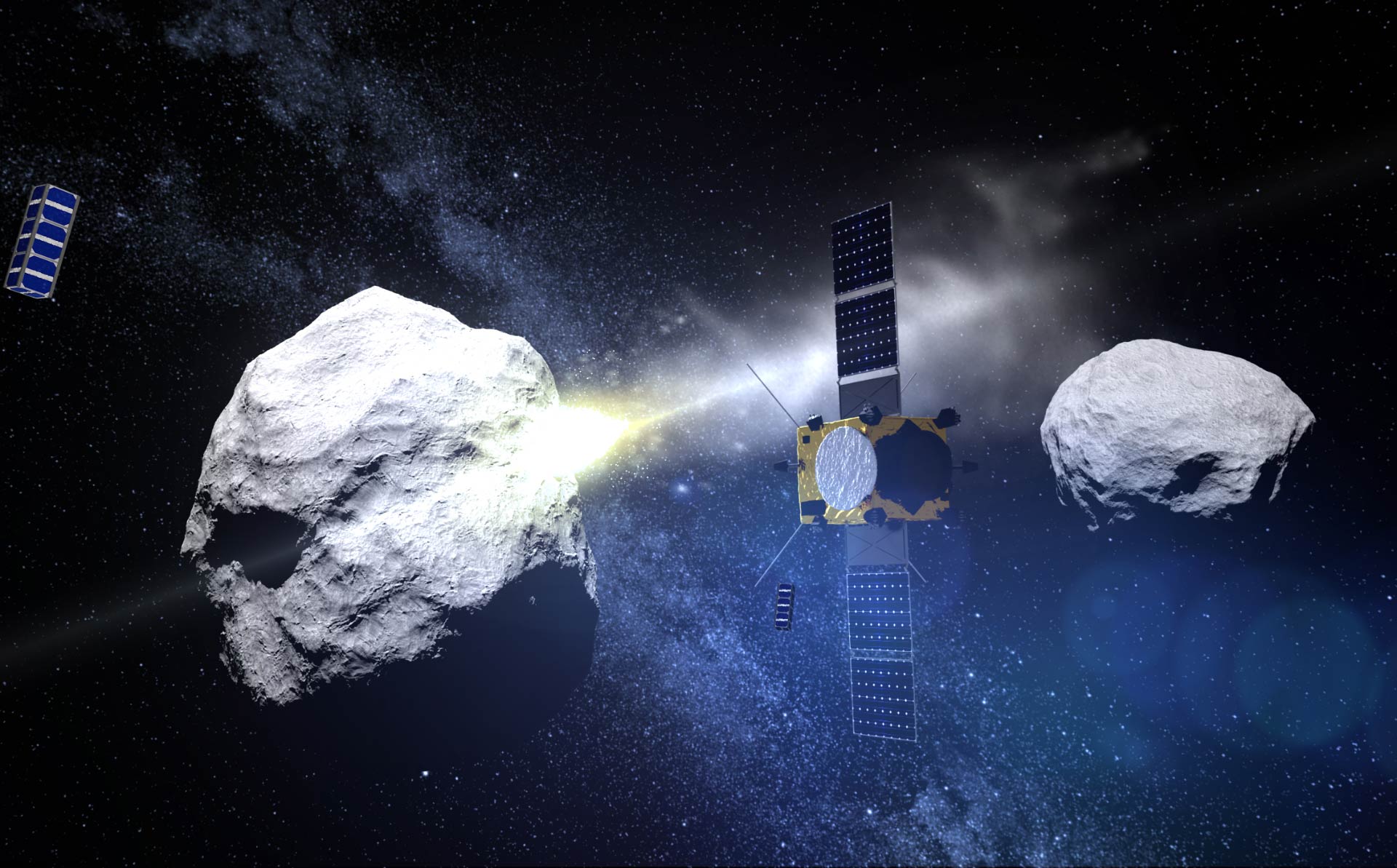NASA’s upcoming project is looking forward the protection of Planet Earth from the threat of asteroids. The project is called Double Asteroid Redirection Test (DART), and it will find a way to deflect asteroids that are heading to the Earth.
Impacts from asteroids can have a catastrophic effect on the Earth. With this new project, NASA wants to avoid the impact of the bigger ones that might come towards our planet. NASA is targeting the Didymos asteroid body, which is a twin system that will pass close to Earth in 2022 and 2024.

“DART would be NASA’s first mission to demonstrate what’s known as the kinetic impactor technique — striking the asteroid to shift its orbit — to defend against a potential future asteroid impact,” NASA planetary defense officer Lindley Johnson said in a statement. “This approval step advances the project toward a historic test with a non-threatening small asteroid.”
The effects of asteroids impacts
Asteroids are airless rocky masses that orbit the sun. They can’t be classified as planets mainly because of their really small size if compared to the size of a planet. However, there is not a standard length for asteroids. They are believed to be debris that resulted from the creation and evolution of the universe billions of years ago. In the solar system, a significant part of them is found in the Asteroid Belt which is an area located between Mars and Jupiter.
Because of their size, asteroids don’t have a gravitational pull that helps them evolve into a spherical form. Therefore, they have an irregular shape.
Depending on their size, asteroids could harm the Earth if they impact into it. When they do so, they are known as meteorites. An iconic example of how harmful they can be is the big asteroid that crashed into the Earth millions of years ago, wiping dinosaurs off its surface. Its impact created a dust cloud that blocked sunlight from getting into the Earth and that profoundly affected life.
Another example is the meteorite that impacted Russia in 2013. About 1000 people were injured by the explosion it caused. Experts said that this body released an amount of energy that can be compared to the one released by atomic weapons. However, the threat of being impacted by a bigger asteroid could even end the life as we know it.
How is DART going to protect the planet from future asteroid impacts?
After that last experience, NASA is looking forward to using technology and knowledge to prevent such catastrophic scenarios. NASA has been tracking for years the trajectory of asteroids, but now it has taken a step further with this new project.
DART will try to repel asteroids from continuing their way towards the Earth. To be more specific, NASA is focusing on the defection of Didymos, a hazardous asteroid that is integrated by two asteroids: Didymo A – with a size of 780 meters –and didymo B – which is 160 meters wide or so. Currently, NASA would only focus on Didymos B. Based on collected data, these asteroids might approach the Earth in 2022 and 2024.

According to NASA, to accomplish DART’s objectives, a craft would fly towards Didymos using a system to launch itself at Didymos B at a speed of around 3.7 miles per second. NASA considers that by doing this, the impact would cause the speed of the asteroid to slow down which hopefully would affect its trajectory. However, it must be done early enough to obtain the desired results.
“DART is a critical step in demonstrating we can protect our planet from a future asteroid impact,” said Andy Cheng who is DART co-leader from Johns Hopkins University. “Since we don’t know that much about their internal structure or composition, we need to perform this experiment on a real asteroid. With DART, we can show how to protect Earth from an asteroid strike with a kinetic impactor by knocking the hazardous object into a different flight path that would not threaten the planet.”
Fortunately, none of the asteroids that have actually impacted Earth recently have been big enough to cause catastrophic consequences. However, a lot of big and hazardous asteroids have passed close to the Earth in the last years. For example, NASA found that a big rock named 441987 (2010 NY65) was supposed to make an encounter with the Earth in June 2017.
It was big enough to end the life of millions. Luckily, in March, the asteroid passed by without having contact with our planet. However, it passed at a distance that is 20 times closer than the moon. Humans are lucky that Earth has not been impacted by a massive rock, but still, it would be better if NASA could prevent these type of situations.
Source: International Business Times
